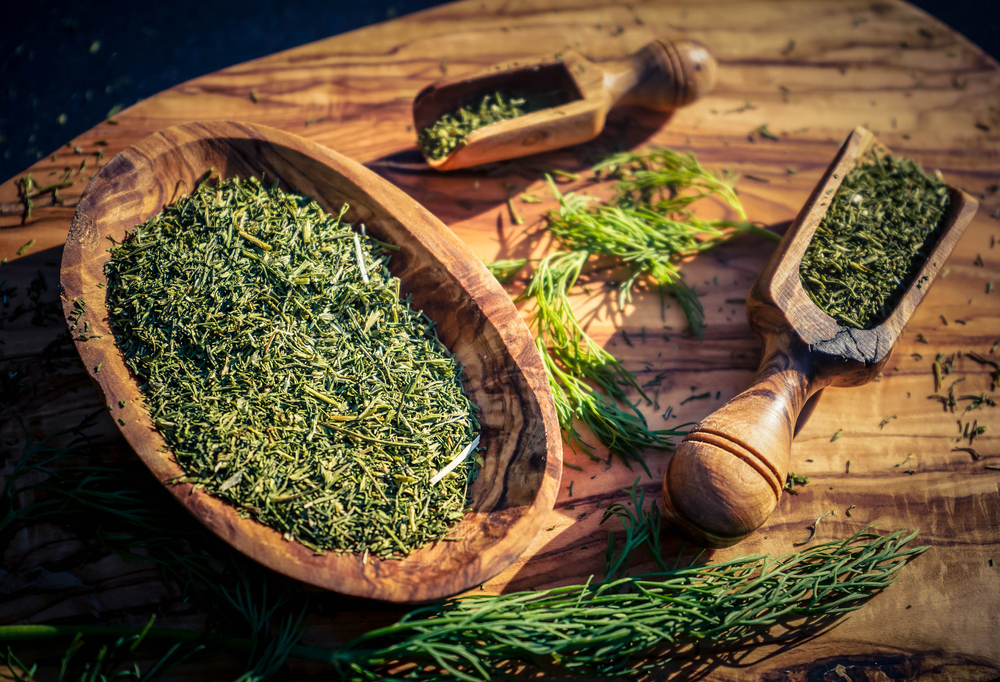Dill (Anethum graveolens) is a delicate, feathery herb known for its distinctive flavor and aroma. Widely used in culinary and medicinal applications, this herb has found its place in kitchens, gardens, and medicine cabinets around the world. Its versatility is rooted in its unique taste, which blends well with various dishes, as well as its numerous health benefits. In this essay, we will explore the cultivation of dill and its diverse uses.
Cultivation of Dill
Cultivating dill is relatively straightforward, making it an ideal choice for home gardeners and commercial growers alike. Dill is an annual herb, meaning it completes its lifecycle within a year, from germination to the production of seeds. The plant prefers a sunny location with well-draining, fertile soil. Dill seeds should be sown directly into the ground after the danger of frost has passed, as it does not transplant well due to its long taproot. Seeds should be spaced about 12 inches apart to give the plants room to grow.
Dill thrives in cooler weather but can tolerate moderate heat. It requires regular watering, especially during dry spells, but should not be overwatered as it can lead to root rot. Dill plants can reach heights of up to three feet, so it’s important to provide support if they grow tall and thin. To extend the harvest period, dill can be succession-planted every few weeks. This will ensure a continuous supply of fresh leaves and seeds throughout the growing season.
Usages of Dill

Dill is a versatile herb that is cherished for both its leaves (known as dill weed) and its seeds. Its distinctive flavor, often described as a blend of anise and lemon, has made it a staple in many culinary traditions.
Culinary Uses
- Dill Weed: Fresh or dried, dill weed is often used as a seasoning for a variety of dishes. It pairs particularly well with fish, potatoes, and eggs. Dill weed is also a key ingredient in tzatziki, a Greek yogurt-based dip. In Eastern European cuisine, dill is frequently used in soups, stews, and salads. Its bright, tangy flavor can elevate simple dishes, adding a burst of freshness
- Dill Seeds: The seeds of the dill plant are also widely used, albeit for different purposes. Unlike the leaves, the seeds have a slightly stronger, more pungent taste. Dill seeds are commonly used in pickling due to their ability to infuse a distinctive, tangy flavor into brines. They are also used in bread, soups, and certain spice blends.
Medicinal Uses
- Digestive Aid: Dill has carminative properties, meaning it helps to reduce gas and bloating. The seeds are often chewed to freshen breath and ease digestive discomfort. Dill tea, made by steeping the seeds, is also a popular remedy for indigestion and stomachaches.
- Anti-inflammatory Properties: The essential oils in dill have been found to possess anti-inflammatory and antimicrobial properties. This makes dill a useful herb for treating minor infections and skin irritations.
- Rich in Nutrients: Dill is a good source of vitamins A and C, as well as minerals like calcium, iron, and magnesium. These nutrients contribute to overall health and can support immune function, bone health, and skin health.
Dill in Culture and History
Historically, dill has been regarded not just for its culinary and medicinal uses, but also for its symbolic significance. In ancient Egypt, dill was used as a soothing medicine. The Greeks believed that dill could bring prosperity and happiness. It was also a common herb in Roman and medieval European kitchens, where it was thought to ward off evil spirits.
Conclusion
Dill is a versatile herb that offers numerous benefits, from its culinary uses to its health-promoting properties. Whether you are a chef looking to enhance the flavor of your dishes or a gardener seeking to cultivate a low-maintenance, aromatic plant, dill has much to offer. Its easy cultivation and wide array of uses make it a valuable addition to any herb garden, kitchen, or home medicine cabinet. As more people seek natural, wholesome ingredients in their cooking and health care, dill’s popularity continues to grow, making it a timeless herb that has been cherished for centuries.
